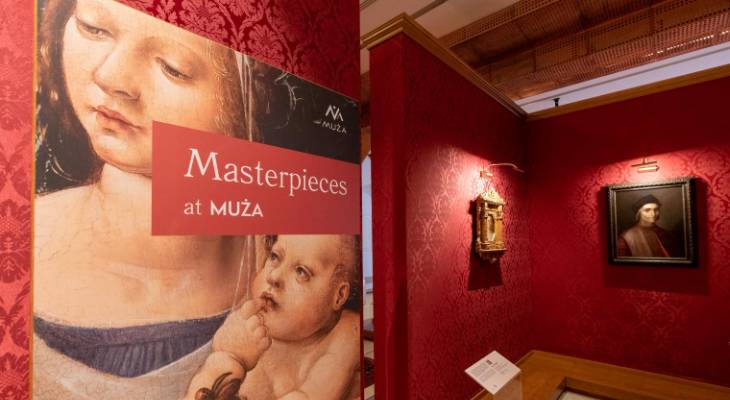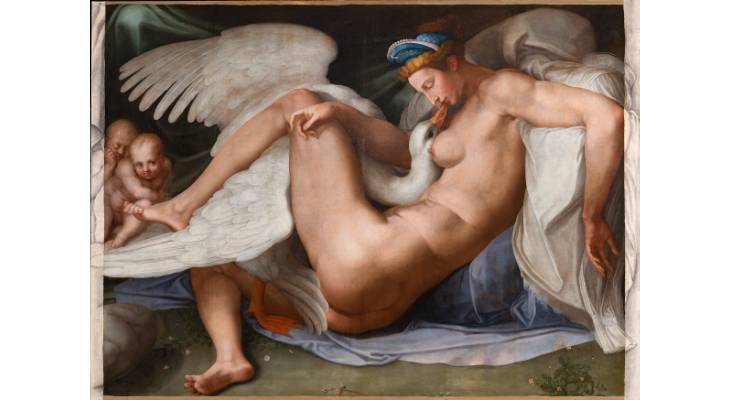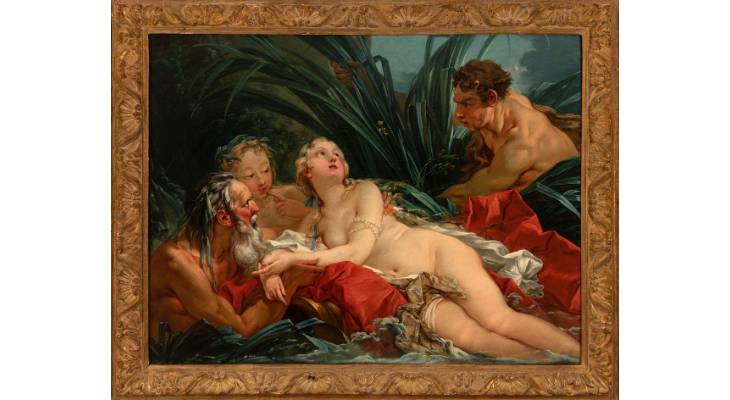Masterpieces at MUŻA, Heritage Malta’s must-see exhibition, is on throughout October.
If you haven’t hot-footed it to the capital to see Masterpieces at MUŻA, Heritage Malta’s prestigious, must-see exhibition yet, then October is your last chance to do so.

And now that the weather has cooled down, why not make an outing of it?
Take in 13 outstanding paintings by world-renowned masters ranging from the late 15th- to the mid-18th centuries, and once you have had your sumptuous fill, prepare to be physically satiated by some of the offerings on the menu of the MUŻA Café and Restaurant.
Situated in the elegant and refined Baroque courtyard of the Auberge d’Italie, MUŻA Restaurant is a welcome pitstop to digest and reflect on the themes featured in these paintings from an international private collection. The talented MUŻA restaurant chefs have taken their cues from the artwork you have just perused – much of it which has been out of public sight for decades – and created signature dishes inspired by the exhibition.
The Swan and the Faun
Leda and the Swan is one of two paintings headlining the section dedicated to Greek Myth in Art, which became a source of creative material for Renaissance artists leading to the ‘rebirth’ of the classical Greek style. Mythology took various forms throughout time, from the representation of beauty to the portrayal of gods and heroes which were shown as idealised figures and whose near-perfect proportions became the heart of aesthetic philosophy.

In the bottom left hand corner of Leda and the Swan, a later imitation of the original work by Michelangelo Buonarroti, an egg, often mistaken for a boulder of sorts, holds the key to a canvas dominated by physical power, tension and passion!
Queen Leda’s pairing with Zeus, Olympian god of the sky and thunder, who is disguised as a swan, was a popular High Renaissance subject. This version is very similar to the engraving by Flemish artist Cornelius Bos, of the original Michelangelo. The painting depicts Mannerist tendencies of elongating and twisting the figure, also known as figura serpentinata, a spiralling technique that features heavily in Michelangelo’s oeuvre.
Queen Leda gives birth to Helen and Pollux, children of Zeus, while at the same time giving birth to Castor and Clytemnestra, children of Tyndareus, her husband, the king of Sparta. The two sets of twins and their births are represented with the help of the two infant figures on the left-hand side of the painting. The egg symbolises the cohabitation between the swan and the queen, which will eventually yield the second pair of twins.
Whilst the Renaissance focused on the expressive power of the mythological figures and their physical shape, the extravagant Rococo emphasis on elaborate whimsical nature and settings influenced artists who manifested frivolous iconography and attention to detail in their paintings.

Meanwhile, François Boucher was one of the foremost painters and decorative artists of the 18th century. He is known today as the painter of boldly voluptuous goddesses and mistresses. Boucher’s Rococo rendition of Pan and Syrinx is a high-toned retelling in rosy pinks and blues of the nymph Syrinx’s flight from Pan’s obsessive infatuation. The use of gently curved lines indicates a sensitivity and softness in the scene, which may have originally formed part of a much larger tapestry cartoon.
Contrasting with the paleness of Syrinx’s reclining nakedness, the god of the forest’s saturnine hands grasp a bunch of reeds, foreshadowing the future. Syrinx will eventually be turned into reeds by the river god to escape the love-struck Pan, who, enamoured by the sound of the wind passing through them, tears some of the reeds to create a musical instrument that bears his name.
Admission to the exhibition is free to Heritage Malta members and children and seniors who are Heritage Malta student/senior passport holders. Up to two adults accompanying children or seniors will be admitted for €3 each. All others pay €10.
MUŻA is open all week from 10am to 4:30pm during the month of October. Children aged up to 12 years will be admitted free of charge.
MUŻA is a project part-financed by the European Union under the European Regional Development Fund – European Structural and Investment Funds 2014-2020.